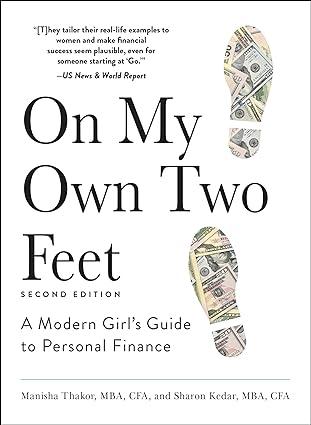Question
BBA Limited is a levered firm having a debt-equity ratio of 1:3. It has financed its capital via debt of 25,00,000 and 50,000 shares outstanding.
BBA Limited is a levered firm having a debt-equity ratio of 1:3. It has financed its capital via debt of 25,00,000 and 50,000 shares outstanding. The interest rate on debt is 8%, whereas shareholders require a return of 10%. The firm wants to make an investment decision. It wants to choose between two projects - Project X and Project Y. Both Projects will last 5 years but will provide different cashflows.
| Year | Year (t)= 0 | Year (t)= 1 | Year (t)= 2 | Year (t)= 3 | Year (t)= 4 | Year (t)= 5 |
| Cashflows | CF0 | CF1 | CF2 | CF3 | CF4 | CF5 |
| Project X | -1,00,000 | 50,000 | 60,000 | 50,000 | 40,000 | 50,000 |
| Project Y | -1,50,000 | 30,000 | 50,000 | 60,000 | 70,000 | 80,000 |
The CFO had to decide which Project would need to be approved. He discussed the different approaches with the CEO and they agreed that the decision should be based on the Net Present Value approach. They also agreed that the Project will be funded in the same debt-equity ratio of 1:3. The bank has confirmed that it will charge the same interest rate as the existing debt on new debt issuance.
- What is BBA Limiteds weighted average cost of capital before it executes the project? [2]
- Which project should the CFO choose? [3]
- What is the total market value of the firm after completing the project? [2]
- What is the number of shares to be issued to raise new equity? [4]
- What will be the share price after taking up the project? [4]
Step by Step Solution
There are 3 Steps involved in it
Step: 1

Get Instant Access to Expert-Tailored Solutions
See step-by-step solutions with expert insights and AI powered tools for academic success
Step: 2

Step: 3

Ace Your Homework with AI
Get the answers you need in no time with our AI-driven, step-by-step assistance
Get Started


